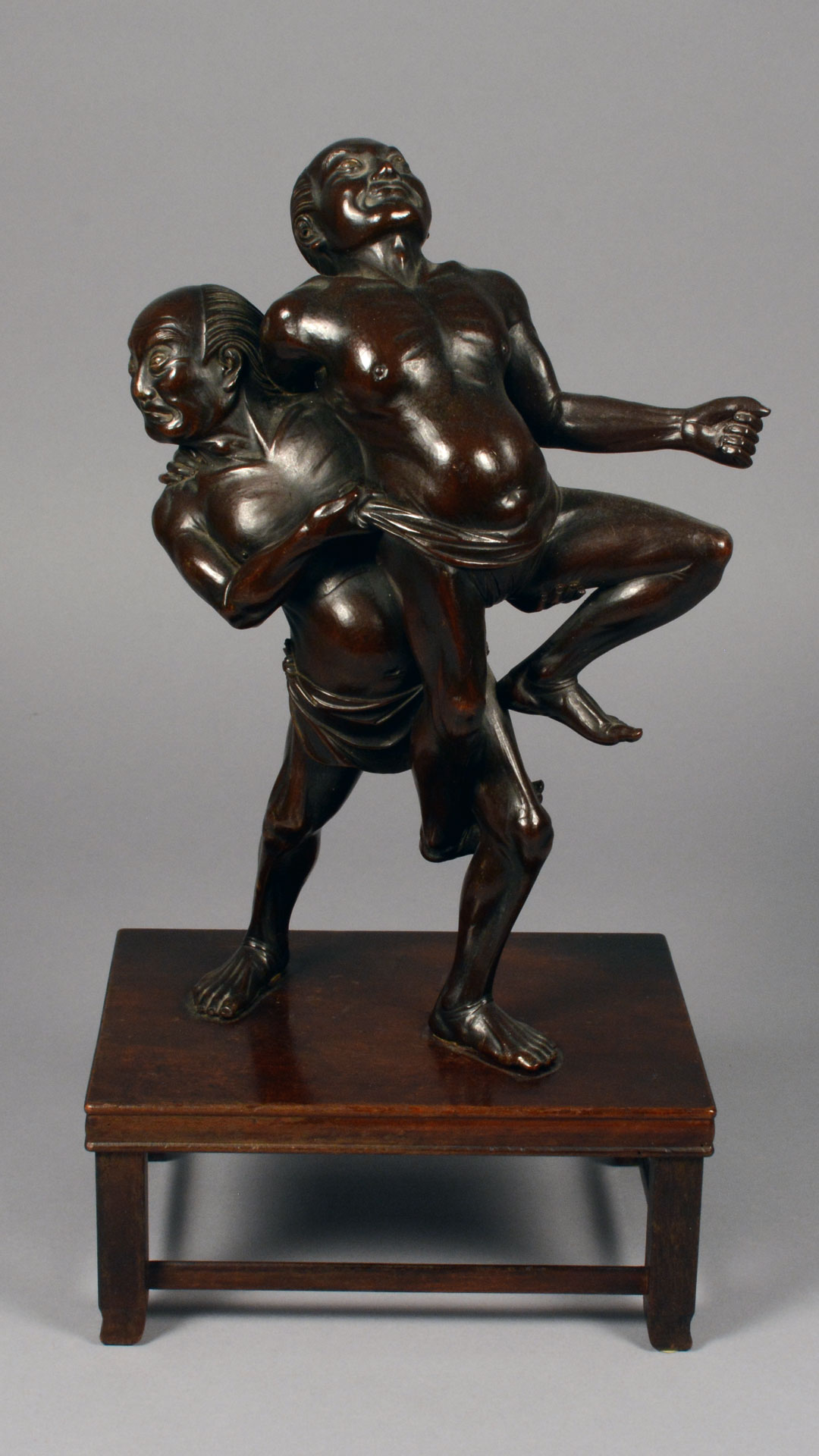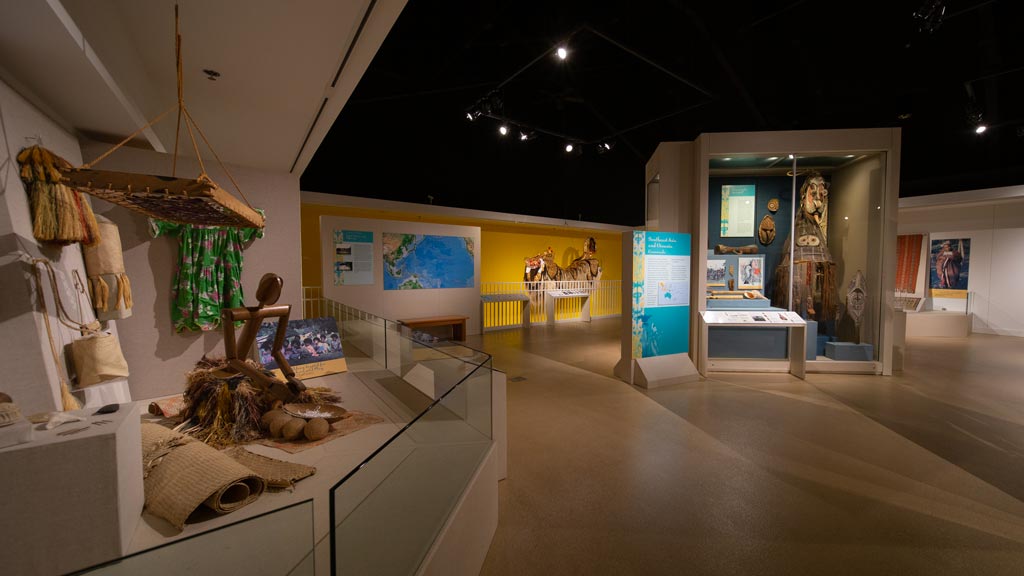
Featured Object: Okimono: Sumo Wrestlers
- Post Date: 12/20/2018
- Author: David Marcus, student writer
- Reading Time: 4 minute read
This Japanese okimono (standing ornament or figure), sculpted at some point between the Late Edo Period (1603–1868) and the Early Meiji Period (1868—1912), depicts two Sumo (“Japanese wrestlers”) in the intense, decisive moment before the execution of a Kawazu-gake Waza (One-leg entanglement drop technique), in which a wrestler coils his leg around his opponent’s, pulls his opponent backwards, and uses his own body weight to topple his opponent. Created to adorn the tokonoma (an alcove in a Japanese room used for the display of pottery, flower arrangements, paintings, and other forms of art), okimono capture various snapshots of Japanese life and mythology. Constructed of either wood (like this one) or ivory, okimono, in their aesthetically-pleasing, elaborate stillness, beckon a return to the stillness within one’s self.
History of Okimono
The history of okimono is but one chapter in Japan’s long history of decorative wood carving, which itself is intertwined with the history of Buddhism. Once the teachings of Siddhartha Gautama (the Buddha) reached Japan in the 6th century, Buddhist temples began cropping up across country. The interiors of many of these temples were dominated by large, sacred, usually wooden idols. Originally carved by Buddhist priests, these initially rudimentary religious images became more elaborate and artistic as professional sculptors began carving them in place of priests. By the 14th century, in addition to these large idols, some temples featured small, sumptuous shrines, each of which encased a Buddhist image—the first okimono.
This trend continued into the early 17th century, when the shogunate required every Japanese household to display a Buddhist idol. This mandate increased the number of professional woodcarvers and established the profession as one integral to Japanese culture. Sons assumed the craft of their fathers after years of apprenticeship, during which they learned to respect their once-living material, and to transform that material into a work of art. Far more time-consuming and less financially rewarding than painting, a life of sculpting often meant a life lived on the edge of poverty. Nevertheless, the dedication of woodcarvers to their art outweighed all monetary factors.
From the Supernatural to the Sumo
With the downfall of the Tokugawa Shogunate in 1867, 250 years of Japanese isolation came to an end. As contact with foreign cultures re-energized Japanese art, Western traders entered a formerly-inaccessible country and culture for the first time. Fascinated with Japan’s exquisitely crafted art objects, the likes of which they had never seen, these traders brought Japanese art—including okimono—to the West. Though Japanese collectors preferred wood okimono to ivory ones, Western audiences were particularly captivated by ivory figures. Westerners especially appreciated okimono figurines depicting contemporary Japanese life—scenes uncommonly depicted by Japanese woodcarvers previously—rather than supernatural or mythical beings. Thus, okimono capturing images of Japanese life and culture, such as the ring of the sumo, came into being.
This okimono is just one of the many okimono housed at Spurlock. See our full collection on our website, or check out our Asia gallery to see the okimono we have on display.
-
 Okimono: Sumo Wrestlers 1999.13.0012
Okimono: Sumo Wrestlers 1999.13.0012
-
- Share:
- Subscribe to Newletter
- Giving
